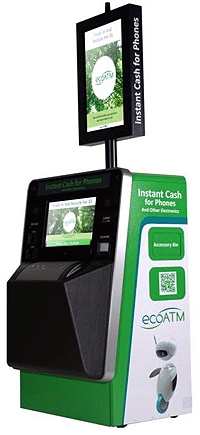Using artificial intelligence (AI) developed through two US National Science Foundation (NSF) Small Business Innovation Research (SBIR) grants, ecoATM kiosks can reportedly differentiate between consumer electronic products and determine a market value. If the value is acceptable, users have the option of receiving cash or store credit for their trade or donating all or part of the compensation to one of several charities.
According to a statement, ecoATM is said to find second homes for three quarters of the phones it collects, sending the remaining ones to recycling channels to reclaim any rare-earth elements and to keep toxic components from landfills.

‘The basic technologies of machine vision, artificial intelligence and robotics that we use have existed for many years, but none have been applied to the particular problem of consumer recycling,’ said ecoATM co-founder and NSF principal investigator Mark Bowles. ‘But we’ve done much more than just apply existing technology to an old problem — we developed significant innovations for each of those basic elements to make the system commercially viable.’
According to Bowles, traditional machine vision generally relies on pattern matching, pairing a new image to a known one. Pattern matching is a binary approach that cannot handle the complexity of ecoATM’s evaluation process, which includes eight separate grades based on a device’s level of damage.
‘We are now able to tell the difference between cracked glass on a phone, which is an inexpensive fix, versus a broken display or bleeding pixels, which are generally fatal for the device,’ said Bowles.
The company’s databases are now said to be trained with images of more than 4,000 devices, and when an identification mistake occurs the system learns from that mistake.
When a user places his or her device into an ecoATM kiosk, the AI system conducts a visual inspection, identifies the device model and then robotically provides one of 23 possible connector cables for linking it to the ecoATM network.
Using proprietary algorithms, the system then determines a value for the device based on the company’s real-time, worldwide, pre-auction system. Within that system, a broad network of buyers has already bid in advance on the 4,000 different models in eight possible grades, so the kiosk can immediately provide compensation.
A number of robotic elements enable the kiosk to safely collect, evaluate and store each device in a process that only takes a few minutes.





Nanogenerator consumes CO2 to generate electricity
Whoopee, they've solved how to keep a light on but not a lot else.